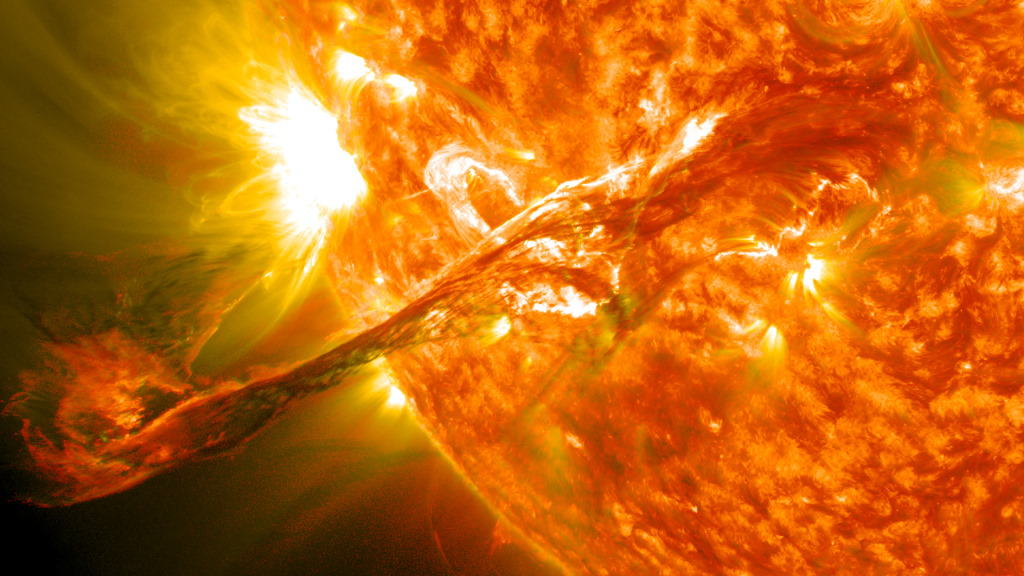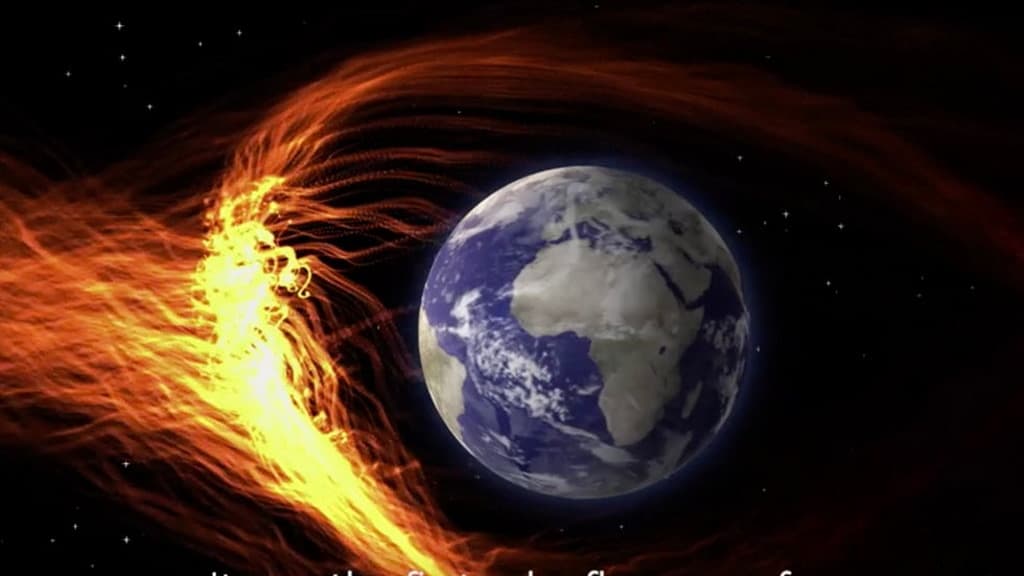PAT PILCHER explains a freaky phenomenon: when loads of charged particles were flung our way from the sun at high velocity.
 News surfaced over the weekend that a large coronal mass ejection of charged particles had been flung away from the sun and was bombarding Earth’s upper atmosphere. Shortwave radio communications across the South Pacific were zapped, and an orbiting satellite had its orbit changed.
News surfaced over the weekend that a large coronal mass ejection of charged particles had been flung away from the sun and was bombarding Earth’s upper atmosphere. Shortwave radio communications across the South Pacific were zapped, and an orbiting satellite had its orbit changed.
Would you like to support our mission to bring intelligence, insight and great writing to entertainment journalism? Help to pay for the coffee that keeps our brains working and fingers typing just for you. Witchdoctor, entertainment for grownups. Riveting writing on music, tech, hi-fi, music, film, TV and other cool stuff. Your one-off (or monthly) $5 or $10 donation will support Witchdoctor.co.nz. and help us keep producing quality content. It’s really easy to donate, just click the ‘Become a supporter’ button below.
Coronal Mass Ejections (CMEs) involve plasma and magnetic fields being ejected at high velocities from the sun. They typically consist of billions of tons of material and an embedded magnetic field. Saying they’re ejected at high velocities doesn’t even begin to cover it. CMEs can move away from the sun at ridiculously fast speeds that range from a pokey 250 km/s to a positively bonkers 3000 km/s. Fast CMEs will reach Earth in around 15-18 hours, while slower CMEs might take up to several days.
The timing of this couldn’t be worse. As of January 4th, Earth reached perihelion (its closest point to the sun of the year). This see’s Earth’s orbit at 147 million km from the sun, which is 4.8 million kms closer than when Earth’s at its farthest from the Sun.
 None of this was wasted on the sun. It decided to fire a coronal mass ejection (CME) which hit Earth on Saturday. The collision triggered what scientists class as a minor G1-class geomagnetic storm. While initial expectations were that it might briefly zap power grids, it did cause shortwave radio blackouts but power grids appeared to have been spared.
None of this was wasted on the sun. It decided to fire a coronal mass ejection (CME) which hit Earth on Saturday. The collision triggered what scientists class as a minor G1-class geomagnetic storm. While initial expectations were that it might briefly zap power grids, it did cause shortwave radio blackouts but power grids appeared to have been spared.
In the northern hemisphere, the National Oceanic and Atmospheric Administration’s (NOAA) Space Weather Prediction Centre expected that the solar storm would cause the northern lights to reach as far south as Michigan and Maine in the US. Unfortunately, rain and clouds throughout much of NZ also meant that even if the southern equivalent (the Aurora Australis) did venture further north, it wasn’t visible. However, the solar storm pushed an orbiting Australian satellite out of its normal orbit. It is assumed that if the satellite cannot be repositioned, it might be permanently out of commission.
The resulting solar storm from CME material colliding with Earth’s magnetic field was relatively minor, rating 1 on the NOAA’s Geomagnetic Storm Scale which ranges from 1 to 5, with 1 being minor and 5 being extreme. Solar storms are expected as every 11 years, the Sun’s magnetic field completely flips, which sees the Sun’s north and south poles swap. This also sees activity on the surface of the sun, such as sunspots, solar flares, and coronal mass ejections ramping up. The solar maximum is expected in 2024, so more solar storms are possible.
 The biggest recorded solar storm to hit Earth happened in 1959 and is known as the Carrington Event. It created aurora displays that were seen all around the planet. The intense impact on Earth’s magnetic field caused sparking on telegraph machinery and cables as well as fires at telegraph stations. The Carrington event got its name after a bright solar flare was recorded on September 1st, 1859, by British astronomers Richard Christopher Carrington and Richard Hodgson. It was the first recorded solar flare. The Carrington event was huge compared to today’s G1 storm, easily a 5 on the NOAAs scale.
The biggest recorded solar storm to hit Earth happened in 1959 and is known as the Carrington Event. It created aurora displays that were seen all around the planet. The intense impact on Earth’s magnetic field caused sparking on telegraph machinery and cables as well as fires at telegraph stations. The Carrington event got its name after a bright solar flare was recorded on September 1st, 1859, by British astronomers Richard Christopher Carrington and Richard Hodgson. It was the first recorded solar flare. The Carrington event was huge compared to today’s G1 storm, easily a 5 on the NOAAs scale.
If a similar storm were to hit Earth today, the results would be catastrophic given our reliance on radio communications and electricity and electronics. Radio, television, satellite communications and GPS would be wiped out. Electricity grids would also be severely damaged.
In March 1989, a large coronal mass ejection struck Earth, knocking out power grids in Quebec and parts of the northeast USA. The storm took out a utility company in Quebec for nine hours as its power transformers melted due to overloading. A lack of radio communication and GPS would see shipping and air travel curtailed. Solid-state electronics could also be fried, and the resulting data losses could jeopardise global commerce and international security.
 So, what are the odds of a Carrington event hitting Earth in the near future? Thankfully, most CMEs miss the Earth. This isn’t all that surprising. The Earth is far from the sun and is a tiny target (at least compared to the sun) that’d have to be in the exact right orbital position at precisely the right time. This scenario unfolded in 2001 when one of the biggest solar flares ever recorded whizzed past Earth into interstellar space. As scary as a modern-day Carrington event sounds, a study published in the science journal Nature estimates the chance of a Carrington-like event happening on Earth before 2029 is less than 1.9 per cent. Phew!
So, what are the odds of a Carrington event hitting Earth in the near future? Thankfully, most CMEs miss the Earth. This isn’t all that surprising. The Earth is far from the sun and is a tiny target (at least compared to the sun) that’d have to be in the exact right orbital position at precisely the right time. This scenario unfolded in 2001 when one of the biggest solar flares ever recorded whizzed past Earth into interstellar space. As scary as a modern-day Carrington event sounds, a study published in the science journal Nature estimates the chance of a Carrington-like event happening on Earth before 2029 is less than 1.9 per cent. Phew!










